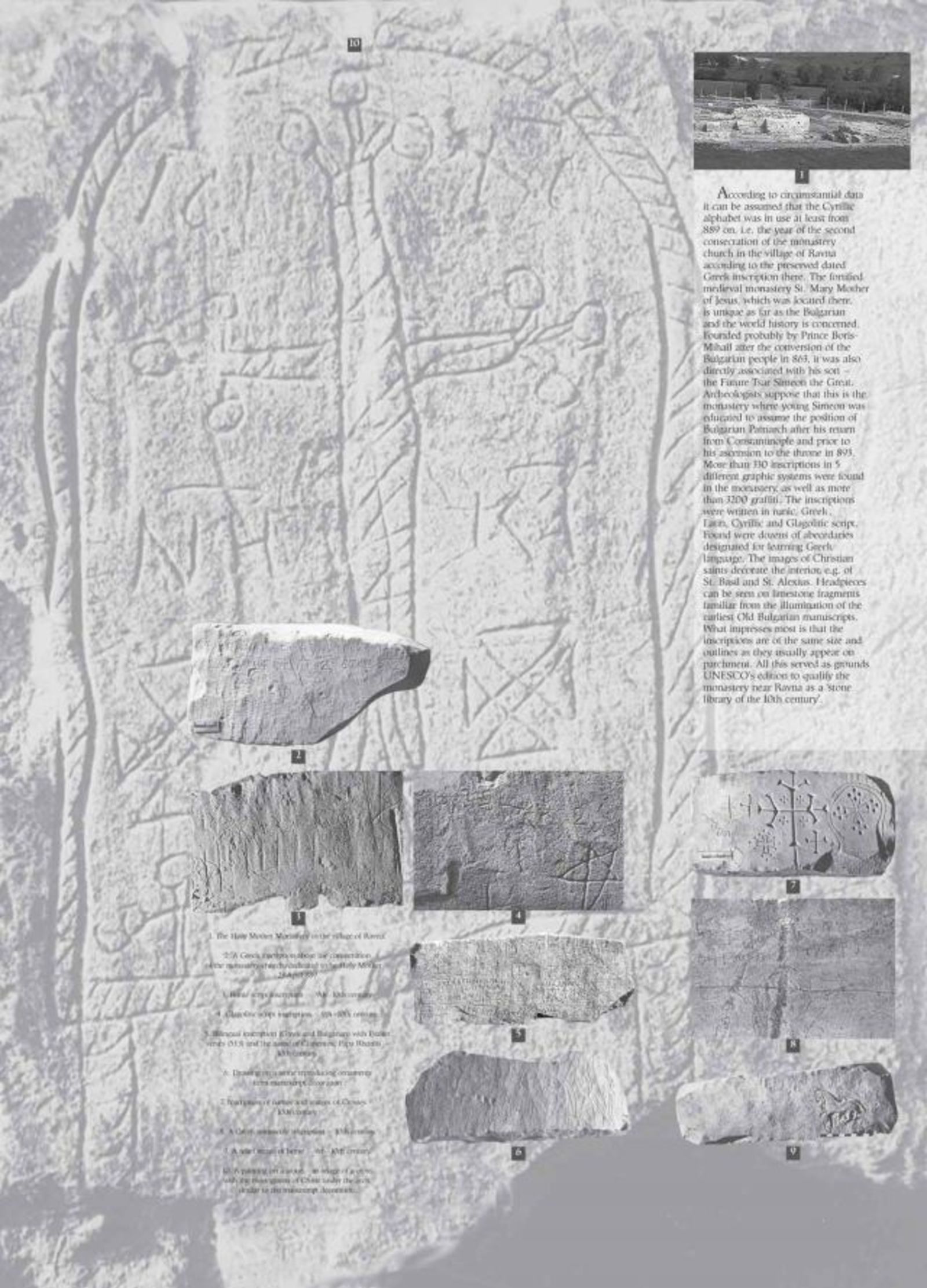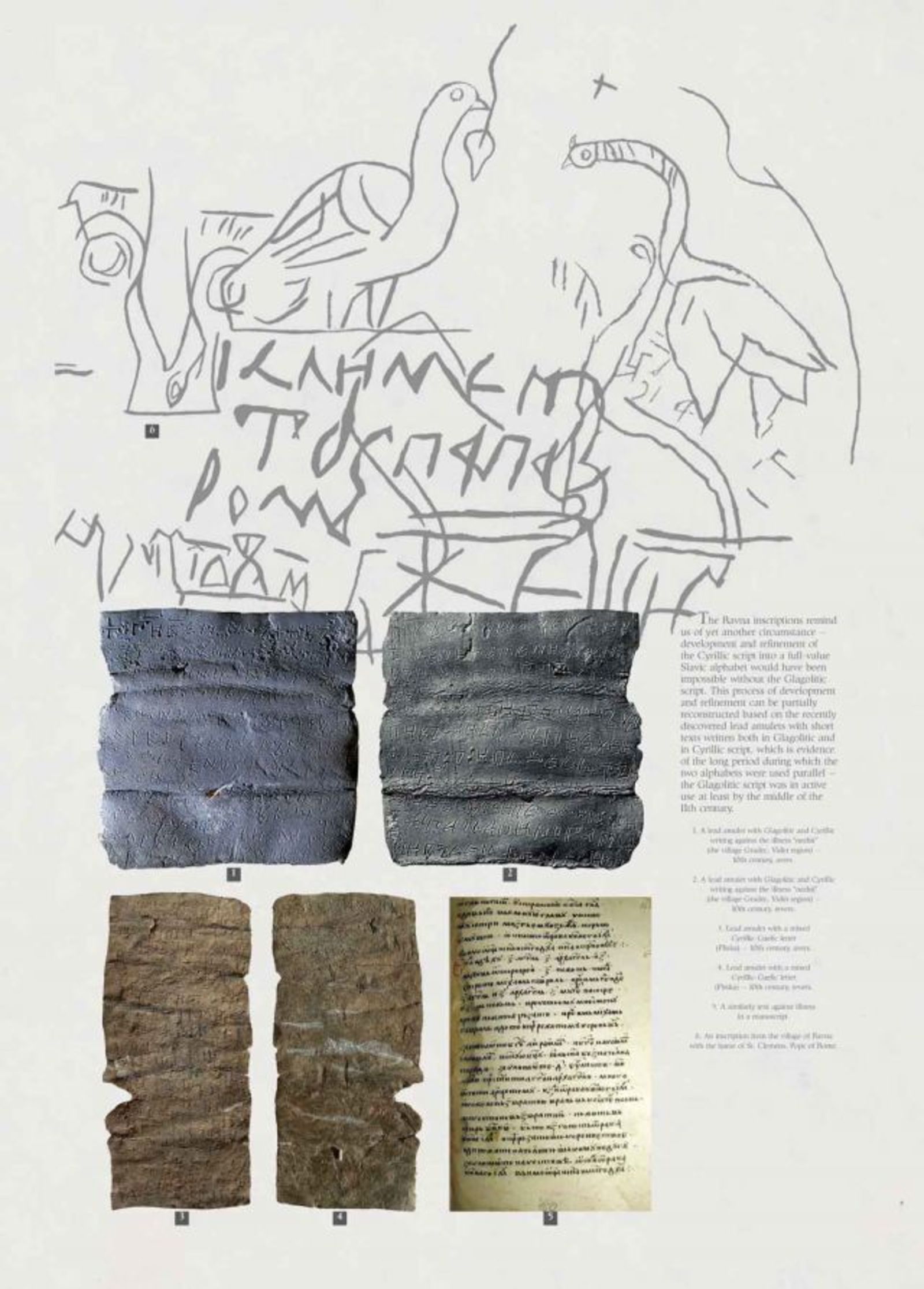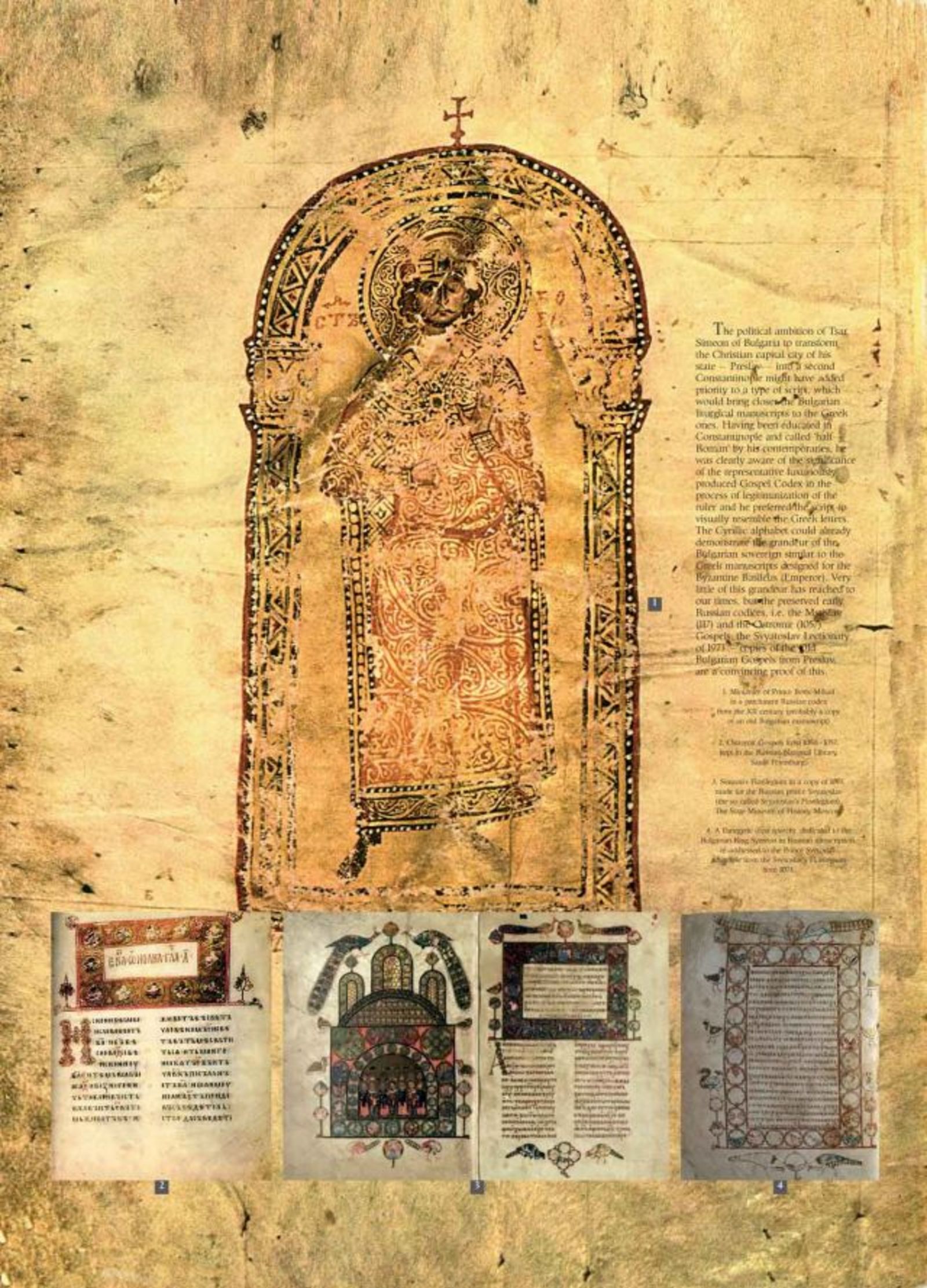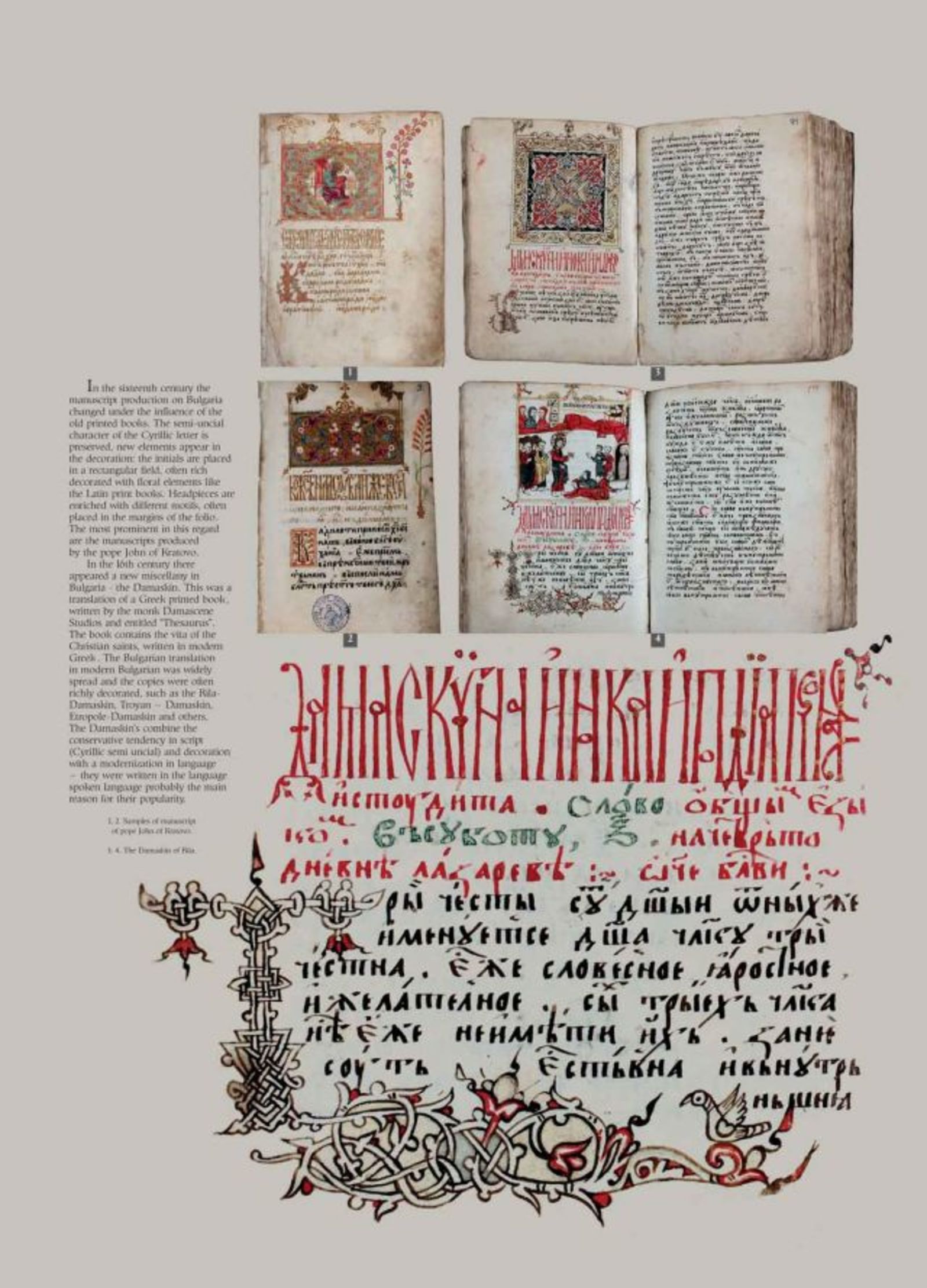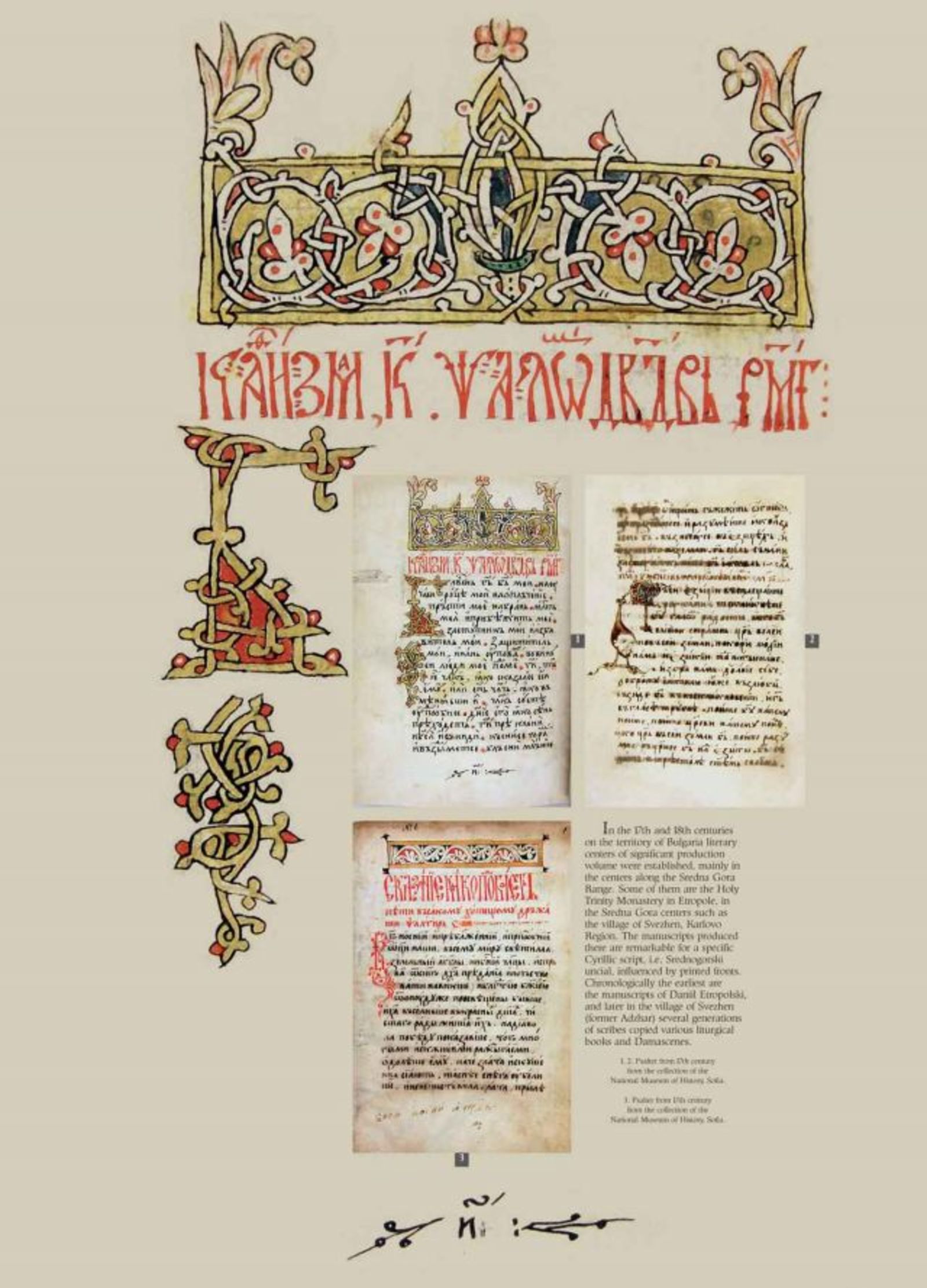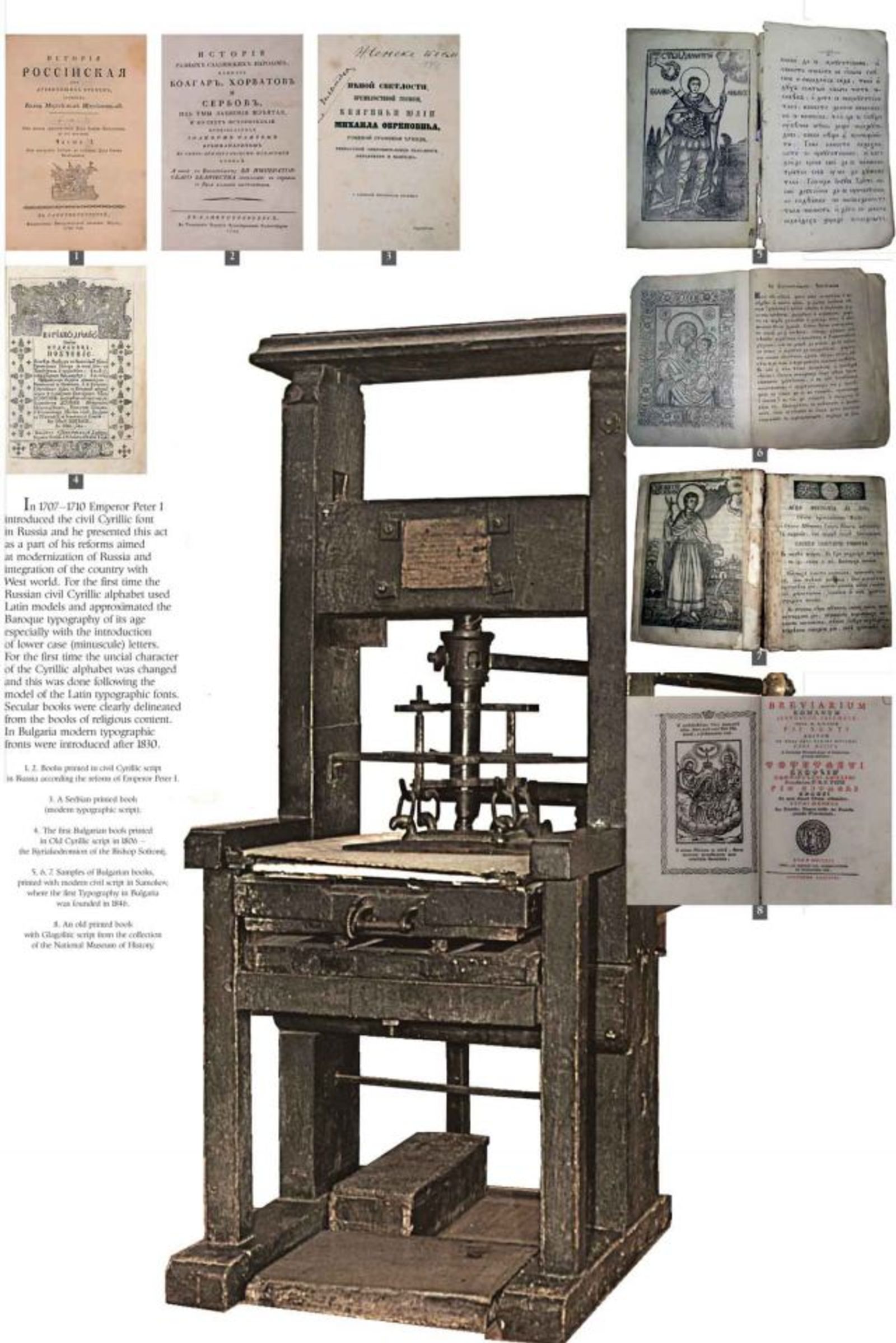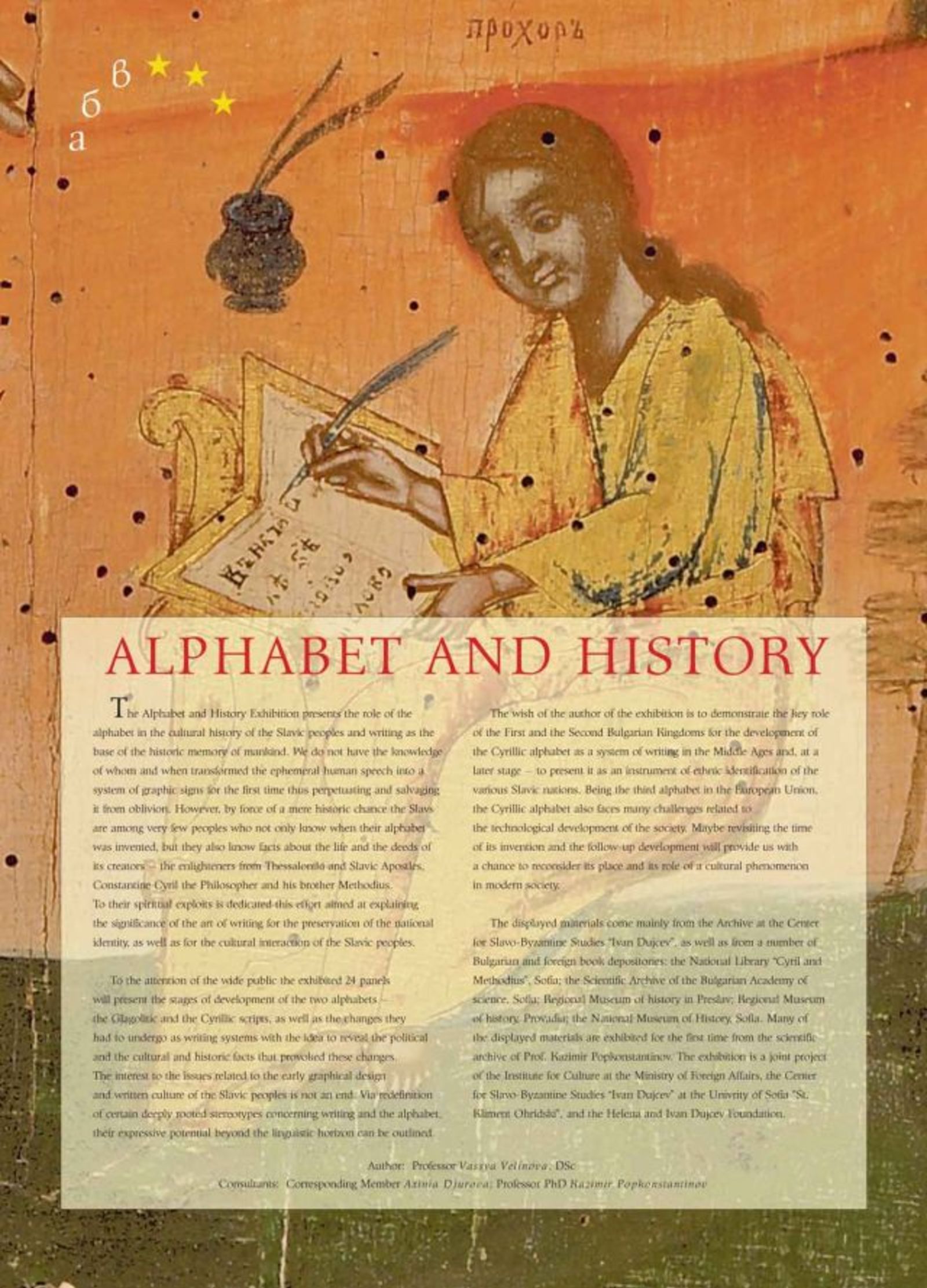ALPHABET AND HISTORY
The Alphabet and History Exhibition presents the role of the alphabet in the cultural history of the Slavic peoples and writing as the base of the historic memory of mankind. We do not have the knowledge of whom and when transformed the ephemeral human speech into a system of graphic signs for the first time thus perpetuating and salvaging it from oblivion. However, by force of a mere historic chance the Slavs are among very few peoples who not only know when their alphabet was invented, but they also know facts about the life and the deeds of its creators – the enlighteners from Thessaloniki and Slavic Apostles, Constantine Cyril the Philosopher and Methodius. To their spiritual exploits is dedicated this effort aimed at explaining the significance of the art of writing for the preservation of the national identity, as well as for the cultural interaction of the Slavic peoples.
To the attention of the wide public the exhibited 24 panels will present the stages of development of the two alphabets – the Glagolitic and the Cyrillic scripts, as well as the changes they had to undergo as writing systems with the idea to reveal the political and the cultural and historic facts that provoked these changes. The interest to the issues related to the early graphical design and written culture of the Slavic peoples is not an end in itself. Via redefinition of certain deeply rooted stereotypes concerning writing and the alphabet, their expressive potential beyond the linguistic horizon can be outlined. The wish of the author of the exhibition is to demonstrate the key role of the First and the Second Bulgarian Kingdoms for the development of the Cyrillic alphabet as a system of writing in the Middle Ages and, at a later stage – to present it as an instrument of ethnic identification of the various Slavic nations. Being the third alphabet in the European Union, the Cyrillic alphabet also faces many challenges related to the technological development of the society. Maybe revisiting the time of its invention and the follow-up development will provide us with a chance to reconsider its place and its role of a cultural phenomenon in modern society.
The displayed materials come mainly from the Archive at the Center for Slavo-Byzantine Studies “Ivan Dujcev”, as well as from a number of Bulgarian and foreign book depositories: the National Library “Cyril and Methodius”, the Scientific Archive of BAS, RMH “Preslav”, RMH “Provadia”, the National Museum of History. Many of the displayed materials are exhibited for the first time. The exhibition is a joint project of the Institute for Culture at the Ministry of Foreign Affairs, the Center for Slavo-Byzantine Studies “Ivan Dujcev” at SU ”St. Kliment Ohridski”, and the Elena And Ivan Dujcevi Foundation.
Author: Professor PhD Vassya Velinova
Consultants: Corresponding Member Axinia Djurova; Professor PhD Kazimir Popkonstantinov


